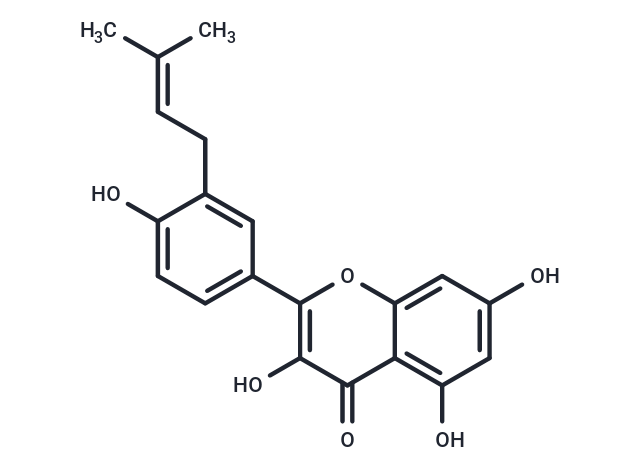Shopping Cart
- Remove All
 Your shopping cart is currently empty
Your shopping cart is currently empty

Isolicoflavonol inhibits Human carboxylesterase 2 (hCES2A) which is a key target to ameliorate the intestinal toxicity triggered by irinotecan that causes severe diarrhea in 50%-80% of patients receiving this anticancer agent.

| Pack Size | Price | Availability | Quantity |
|---|---|---|---|
| 5 mg | $898 | Backorder |
| Description | Isolicoflavonol is a potential cancer chemopreventive agent. |
| Targets&IC50 | CES2A (human):<1.0 μM(Ki) |
| Molecular Weight | 354.35 |
| Formula | C20H18O6 |
| Cas No. | 94805-83-1 |
| Smiles | CC(C)=CCc1cc(ccc1O)-c1oc2cc(O)cc(O)c2c(=O)c1O |
| Relative Density. | 1.444 g/cm3 (Predicted) |
| Storage | Powder: -20°C for 3 years | In solvent: -80°C for 1 year | Shipping with blue ice. |

Copyright © 2015-2025 TargetMol Chemicals Inc. All Rights Reserved.